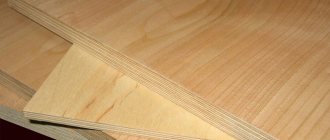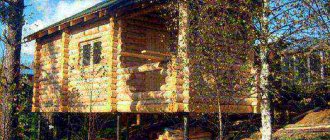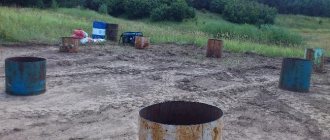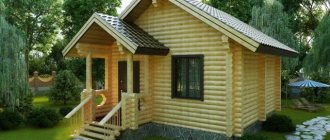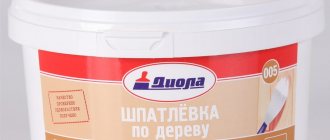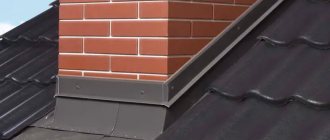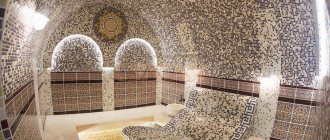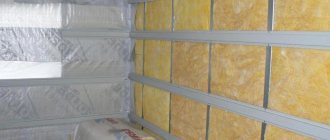Water has a dual effect on building structures: it can penetrate through their thickness, saturating the materials and accumulating inside underground rooms, and it itself and the salts dissolved in it can slowly destroy structural materials that come in its way.
Therefore, in the construction industry, protection against both effects of water, which is called “waterproofing,” plays an important role.
In this article we will consider all existing types of waterproofing for baths, focusing on liquid forms as being of the greatest interest.
Liquid glass for walls - Building a bathhouse or sauna
What is liquid glass?
Where and how it is used in construction and repair “Liquid glass is an aqueous-alkaline solution of sodium silicates, less often potassium and even more rarely, lithium. A common name in everyday life is silicate glue” (excerpt from Wikipedia).
Today we’ll talk about a useful product (no, not cucumber pickle) – liquid glass. This is a unique material that has many useful properties. Let's find out what we can do for them? So – liquid glass is used in construction and repair.
First, about the main property - this is effective adhesion, that is, sticking. By introducing itself into the material, liquid (soluble) glass “gives” moisture to it, thereby increasing its viscosity and strength. In other words, there is a partial exchange with the coated surface at the molecular level.
How do they do it?
Liquid glass is produced by boiling sand and potassium carbonate (potash) in furnaces with a temperature of about 1300°C. The product flows onto a moving conveyor belt consisting of metal plates, where it cools, hardens and bursts into pieces (silicate blocks). The resulting liquid glass differs from traditional glass in that under certain conditions it dissolves and turns into a liquid state.
Therefore, most areas of its application involve a liquid composition in the form of special aqueous solutions. Dissolution processes take place in autoclaves under a certain pressure. The resulting solution is filtered, then the ratio of alkali and silicic acid values is adjusted. After which the solution is adjusted to the required density and transported in storage containers. I hope it's not difficult to explain?
Main aspects and applications
An important ability of glue is the ability to fill and eliminate small cracks, chips and irregularities. Thus, there is an obstacle to the destruction of concrete, brick, metal and other structures by air and water. Important point. Although the coated material becomes water-repellent, it remains vapor-permeable (photo above).
Before impregnation, the surface must be cleaned and degreased. For application use a brush, roller or spray. The mixture penetrates the concrete structure by 1-3 mm. With multi-layer impregnation, this depth increases.
To impregnate the surface, use potassium-based liquid glass diluted with water 1:5, as well as fluoride silicate in a 1:1 ratio. This impregnation is suitable for concrete (strengthening its weathered surfaces), natural and artificial stone, and plaster. Resistance to water, flue gases, various solutions of acids and salts is significantly increased. In addition, due to its high alkalinity, the impregnation acts as an antiseptic.
Thanks to the addition of sodium silicate, paint in which liquid glass is added becomes more wear-resistant and does not fade. In addition, liquid glass is used to remove old paintwork;
Applying a composition containing liquid glass on a surface under plaster or painting is not recommended. The resulting film will be an obstacle to further processing.
Liquid glass cannot be added to the prepared sand-cement mortar. It is diluted with water and added to the mixed dry mixture. If the composition hardens quickly during work, you can dilute it with a small amount of water, adding it in small portions.
A little about the characteristics:
Differences in the chemical composition of sodium and potassium liquid glass determine the scope of their application. The first (sodium) can improve the quality of the adhesive composition. It interacts productively with mineral-based components. Its use is effective for strengthening foundations and waterproofing, as well as as a component of antiseptic and fire-resistant mixtures. The second (potassium glass) is resistant to atmospheric and some chemical influences. It is often used to make protective paints.
Both products do not emit substances hazardous to health. But when working, it is necessary to wear protective gloves to protect the skin from the alkali included in the chemical composition of liquid glass. If it gets on the skin, rinse quickly with water.
Liquid glass that has dried on the surface of ordinary glass irreversibly becomes dull (opaque). If you need to make glass opaque, you can mix it in a 10:1 ratio with chalk and apply it to the surface. After drying, you get frosted glass.
I remember as a child, on New Year’s Eve, I cut out and glued paper snowflakes onto silicate glue. The object of decoration was a door with decorative glass. The result was disastrous: the appearance of the doors was spoiled and, of course, “educational instructions” from the parents. The lesson will be remembered for the rest of my life...
In the recent Soviet past, the use of liquid glass was widespread in various construction technologies. Now the market is saturated with a large assortment of ready-made adhesive compositions (fire-resistant, moisture-resistant, antiseptic, etc.). However, many of them still contain liquid glass as an ingredient.
Nowadays, experienced specialists use silicate glue in measured portions and without any instructions in various construction processes and more. I will end here, I hope you learned something new and useful for yourself.
An anecdote on the topic: On a store window: Dear women, don’t sigh too much - the glass fogs up. Administration of the Fur store.
Let's find out what liquid glass is. Properties and characteristics of the material. How and where is it used in construction and renovation?
What is the flooring made of?
When arranging a wooden floor, great importance should be given to the choice of material from which the boards are made. The thickness of the board must be at least 30 mm, and the material can be any. Let's consider the most suitable options:
The most suitable for arranging a leaky floor in a bathhouse is oak. However, this is a rather rare and expensive material.
Quite a budget option, but due to the high resin content in wood, it is very susceptible to rotting, but the floor in the dressing room made from it is a good option.
3. Linden or aspen.
The wood is quite durable, but is more suitable for finishing walls and ceilings in a bathhouse.
The best option to create a steam room floor with your own hands. This type of wood is of good quality: when interacting with water, the resin polymerizes and due to this, wood rotting does not occur at all.
To create an optimal design, it is recommended to use one type of wood, so the logs should also be made of larch. You can determine the required amount of timber based on the thickness of the board used for the floor. With a standard thickness of 30 mm, the timber is laid at a distance of 55-60 cm from each other. It is worth adding a few more to the amount of timber obtained in this way (they will be needed when arranging the floor for the stove, for reinforcement).
Of course, larch is good in itself, but additional protection is never superfluous. How to treat the floor in a bathhouse so that it lasts as long as possible? For this purpose, there are many special impregnations created specifically to protect the floors in the bathhouse from moisture.
The cheapest is to treat all lumber twice with regular drying oil.
But you can also use more expensive options, it all depends on your choice. The only point is that treatment with any drug must be carried out 2 times.
The beams are laid across the building, the first element is placed close to the wall, and the subsequent ones are placed at a distance of 50-60 cm from each other. At the installation site of the stove, the distance between the logs should be reduced to 20 cm. This is necessary in order to strengthen the installation site of the stove, since its total weight with the chimney can reach 500 kg. Before laying the flooring, the logs can be secured, since after laying the boards the structure will become unified and motionless.
Application of liquid glass for different types of surfaces
With the advent of a protective coating based on liquid glass on the construction market, consumers immediately appreciated its unique capabilities. Currently, this composition has a fairly wide scope of use. How is processing done using liquid glass and what is it?
What is the material
Silicate glue or, as it is otherwise called, liquid glass is an aqueous solution of silicate salts. Depending on the main component there are:
Soda glass is used to accelerate the hardening process of cement mixtures due to the chemical reaction that occurs.
Liquid glass has become widespread as a construction and finishing material due to its properties:
Application for waterproofing
Due to its chemical composition, liquid glass does an excellent job of filling porous materials:
When the surface is treated with a silicate composition, its hydrophobicity and strength increase. Therefore, liquid glass has become particularly widespread in the processing of foundations, walls and floors of basements, wells and swimming pools. To produce a primer with hydrophobic properties, it is necessary to combine water, cement and ironclad in equal proportions.
The surface to be treated must first be prepared: leveled and cleaned of dirt. When processing wood, it is desirable to preserve its natural unevenness (this will ensure better adhesion of materials). If you had to wet the surface during cleaning, then it must be allowed to dry before processing. The thickness of the waterproofing mortar layer must be at least 3 mm.
Silicate solution is also used when covering floors in a bathhouse or bathroom. To create a hydrophilic coating of a large area, for example, to cover a floor or walls, you can use a spray gun, roller or brush.
Application to increase the fire resistance of materials
The fire resistance of liquid glass allows it to be used for:
To prepare a fireproof silicate mortar, 3 parts sand, 1 part cement and 1 part liquid glass are required. Such a mixture quickly hardens as a result of the chemical reaction that occurs, so you can first make the necessary structure from ordinary mortar, and then apply an external coating of the concrete with a fire-resistant layer.
To give the surface fire-resistant properties, you can coat wood or concrete only with liquid glass from a spray gun, using it as a primer. Walls can also be impregnated either with a separate solution of silicates or in the form of a cement screed for the floor.
Pouring the flooring
In bathrooms, showers, bath rooms and indoor swimming pools, which are characterized by constant humidity and wet floors, flooring can be made using liquid glass. To fill the floor you need:
It is worth considering that it is impossible to decorate a floor already covered with liquid glass. When pouring a concrete screed, the floor surface will have a corresponding “concrete” color and texture. Decorating the floor must be done before applying a layer of liquid glass. Alternatively, you can paint the concrete. At the same time, it is recommended to add a small amount of silicate to paints and varnishes to improve their adhesion to concrete. After the paint has dried, you can fill the floor according to the above algorithm.
By the way, taking into account the non-toxicity of the material, its heat and water resistance, it can be used to treat a steam room, which is most often made of wood and can be subject to deformation with constant exposure to moist hot air without proper care.
Other uses
Liquid glass is also used for many other purposes:
In construction stores, liquid glass is presented in a wide range: both in its pure form and ready-made building materials based on it. Thanks to its low price, this material is available to any consumer, regardless of his income level. The main thing is to choose a composition that is suitable for its characteristics.
Processing with liquid glass can be done on almost any surface. Thanks to its natural composition, liquid glass is safe for use, dries quickly and gives the surface a shiny appearance.
Waterproofing a concrete floor:
Concrete flooring is reliable, durable and strong. But in this case, waterproofing of the bath floor is also necessary. Before starting work, you need to make sure that the concrete screed has completely set.
Without proper thermal insulation in cold regions, ice forms on the bath floor. It is not possible to get rid of ice even with rapid heating of the air. Expanded polystyrene should not be used due to the easy flammability of the material. Waterproofing must be laid over the heat-insulating material to prevent freezing in winter.
Concrete must be applied to the leveled subfloor, leveling it so that there are no distortions when finishing the floor. After setting, two or three layers of moisture-proof mastic are laid on a clean surface. Then the roofing material or membrane is rolled out on top.
Take a hair dryer and solder the seams. Then the reinforcing mesh is laid and a layer of concrete is laid down again. You need to be careful if you are finishing the walls - use masking tape to prevent the surface from being smeared. Porcelain tiles or other finishing are laid on the concrete screed and waterproofing layer. Please note that when building a wooden bathhouse, work should be carried out after the walls have settled. This process takes from one to two years.
Concrete floor diagram
Tools
Among the large number of options for waterproofing, liquid glass stands out with many advantages. We will consider the features, application and characteristics of this material further.
General concept and advantages of liquid glass
The term liquid glass refers to a solution based on water and sodium or potassium silicates. It has a viscous structure, and therefore copes well with work related to waterproofing.
If we consider the composition of liquid glass, then small crystals are easily visible in it, which, after being applied to the surface, enlarge, filling small cracks. It is thanks to this structure that liquid glass is characterized by a water-repellent and airtight effect. Liquid glass is used in a variety of fields due to its environmental friendliness and harmlessness.
If we talk about the principle of action of liquid glass, then it has adhesive ability. This manifests itself due to the fact that liquid glass molecules enter the molecules of the solid material, which do not have close bonds with each other, which penetrate into the interior of the solid molecules and thus their adhesion occurs.
Liquid glass resembles rubber, which is in a liquid state. After its application, the surface becomes water- and airtight. The composition of liquid glass includes calcium or sodium silicate, to which soda or quartz sand has been added. During the production of liquid glass, it is crushed, fired and re-crushed into a powder mass.
The liquid glass mixture has the following properties:
This material has a large number of advantages; studying reviews about liquid glass, the following advantages are highlighted:
1. Liquid glass is a very liquid adhesion, which, due to its fluid state, can easily penetrate into the smallest pores and cracks. It also has strong adhesion to the surface and easily covers both concrete and wooden substrates.
2. The creation of a liquid waterproof film is another advantage of this material. Regardless of how liquid glass is applied, a complete and moisture-resistant surface is obtained.
3. Low consumption of liquid glass is also its advantage. Especially when it is added to cement mortar, as a penetrating type of waterproofing.
4. If we compare the cost of liquid glass with other waterproofing materials, then it successfully outperforms them, since it has the most affordable cost among alternative options.
5. Waterproofing with liquid glass has a service life of 5 years. This material gradually self-destructs, but if you cover the waterproofing with a protective layer of paint, it will last much longer.
6. It is the only insulator that allows you to work even in conditions with high humidity.
Despite the large number of advantages of liquid glass, there are also a number of its disadvantages:
1. It has a limited scope of use - it is used as waterproofing of concrete or wooden surfaces. It is prohibited to use liquid glass solution for waterproofing brick surfaces, due to their possible destruction.
2. The film that liquid glass forms is quite fragile, so it must be used as a combination of several types of waterproofing.
3. Difficulty of application - the material dries very quickly and forms a film, so work skills are required to make waterproofing efficiently.
Liquid glass photo:
Scope of use and types of liquid glass
As mentioned above, liquid glass is not suitable for all materials, but its scope of application is quite wide. Liquid glass is used in the following cases:
1. If you add liquid glass to a cement mortar, you will get a reliable coating, protected from moisture and the negative influence of groundwater, if the mortar is used to fill the foundation.
2. Liquid glass is used for waterproofing swimming pools or artificial ponds.
3. Used as an adhesive for gluing various types of building materials.
4. Used to produce mortars with fire-resistant or acid-resistant characteristics.
5. If there is a problem with mold or mildew in the house, several layers of liquid glass should be applied to previously cleaned affected areas.
6. Use a solution of liquid glass as an adhesive to repair paper, cardboard, wood or porcelain products.
7. To seal weak joints or plaster a pool, a solution of cement and liquid glass is perfect. But keep in mind that you need to work with such a solution quickly, since after a while it thickens and becomes unusable.
8. If you plan to build a house on weak soils, which will shrink in a few years, then a solution of cement with liquid glass is used for injections, which are injected into the upper layers of the soil.
If we consider the scope of using liquid glass as waterproofing, we will highlight the following options:
1. Liquid glass is used as coating waterproofing. Before installing roll waterproofing, several layers of liquid glass are applied to the surface. The solution perfectly fills all cracks and pores of the concrete surface.
2. A solution of liquid glass with cement is used to eliminate serious leaks or as waterproofing of joints in prefabricated foundations.
3. Liquid glass is part of concrete; it improves its solidity and provides waterproofing.
Two types of liquid glass are common:
The first option has good adhesiveness and is used for waterproofing the foundation parts of a building. Included in antiseptic impregnations. Interacts well with mineral-based formulations.
The second type is a metal additive and helps improve the stable characteristics of glass. Resistant to acids. It does not have the typical shine of glass, so it is used as a surface coloring.
Recommendations for working with liquid glass
If liquid glass is to be applied to a surface, then it must first be diluted with water in the ratio of 200 grams of water per 100 g of material. In this case, no more than 300 g of solution will be required per square meter.
Waterproofing with liquid glass is used on walls where the plaster has weathered or on concrete walls with uneven surfaces. Using liquid glass will strengthen and level the surface, and also create a protective antiseptic layer.
There are several methods for applying this material. Before using liquid glass, the surface should be degreased, cleaned and leveled as much as possible. If impregnation of concrete is required at a shallow depth of up to three millimeters, then use a spray gun or brush. If deep impregnation of more than two centimeters is necessary, at least three layers of solution must be applied.
If liquid glass is used to waterproof a floor or concrete screed, then one liter of material is added to 10 liters of concrete mortar. Also, liquid glass is an excellent anti-corrosion impregnation; it is used to treat metal structures. To ensure the protection of the pool from water leakage, the application of a solution of liquid glass is also used. Liquid glass is part of fire-resistant paints.
Liquid glass - operating instructions and application
To prepare a solution of concrete and liquid glass, the proportions are one to ten. This mixture is used for waterproofing wells, swimming pools, bathrooms, basements and other structures made of concrete or reinforced concrete.
Applying the material is a fairly easy process, during which a protective layer is formed on the surface, which acts as a barrier to moisture penetration.
The facade of a building should not be treated with such a raster if it is planned to be painted further, since the adhesion of the paint and the wall will be low, and the paint will practically not lie on the surface.
When working with liquid glass, it is recommended to use special clothing. To make a traditional Russian stove, a solution based on cement and liquid glass is used. The ratio of components sand: cement: silicate glue is 3: 1: 0.2. The result is a mixture that resembles dough, is very easy to work with and has good performance characteristics as a material for constructing an oven.
The use of silicate glue, to which liquid glass is added, is very popular among builders. It is used for gluing tiles made of polyvinyl chloride or linoleum. Water pipes are coated with liquid glass to prevent water leakage and seal joints. To make protective non-flammable fabric, liquid glass is also used as an impregnation.
Liquid glass is a universal material that is used even in gardening. When small wounds appear on trees or bushes, they are covered with liquid glass. It is an excellent antiseptic and prevents the development of harmful bacteria.
Liquid glass for waterproofing - nuances in application
Before applying liquid glass to the surface, it must be cleaned of dust and dirt.
Then follow these steps:
1. Apply liquid glass to the surface with a brush or roller.
2. Wait 30 minutes and apply another coat. Try to do this evenly without allowing gaps to appear.
3. The next stage is preparing the protective layer. Make a regular mortar based on cement and sand. Add liquid glass to it, in a one to one proportion.
4. Stir and apply to the surface at a very fast pace. This solution should not be applied a second time, since the functions of liquid glass will not be performed.
5. Mix gradually, apply the solution to the surface using a cement spatula in a standard layer.
And remember, before using liquid glass, you should inspect it for cleanliness, foreign objects or lumps. The shelf life of liquid glass is quite long, and the temperature range is wide. Therefore, even if it is stored outside in the winter, this will not affect its quality in any way.
Let's consider applying liquid glass to the foundation:
Recommendations for choosing and purchasing liquid glass
To buy liquid glass, contact any hardware store or market. Among the large number of liquid glass manufacturers, there is practically no difference in its composition. Therefore, which manufacturer to choose is a personal matter. But, in principle, even the cheapest material has the same characteristics as the expensive one.
If you make a choice between sodium or potassium type liquid glass, then each option has its own advantages and disadvantages.
Potassium liquid glass is used for foundations, as it is more viscous, and sodium liquid glass is used for waterproofing other construction objects.
Tips for preparing solutions based on liquid glass
1. There is an option for preparing a primer based on liquid glass. It is not recommended to treat walls with a pure solution of liquid glass. Thanks to its antiseptic properties, liquid glass does an excellent job of priming, preventing the formation of mold and mildew, and increasing adhesion.
To prepare a primer based on liquid glass, you must have:
The amount of cement and liquid glass is the same, and the water should make the mixture liquid, suitable for applying to the wall with a roller. First, cement is mixed with water, and then liquid glass is added. To do this, use a drill or a construction mixer. It is recommended to use the solution within half an hour; if it has hardened, add a little water.
2. To prepare a waterproofing or fire-resistant solution, take a little sifted sand. Equal parts of water, cement, sand and liquid glass are mixed. This mixture does an excellent job of waterproofing wells.
3. Antiseptic solutions help prevent the appearance of microorganisms or bacteria. Its preparation is a simple process. To do this, mix liquid glass with water one to one and cover, for example, a wooden surface with this solution. This is much cheaper than traditional moisture-resistant impregnations, but no less effective.
4. To make impregnation from liquid glass, which is used to cover walls, ceilings or floors, four hundred grams of liquid glass should be diluted in one liter of water.
Tools Among the large number of options for waterproofing, liquid glass stands out with many advantages. About the features, application and characteristics of this material
Do-it-yourself reliable bath floor: step-by-step guide + photos
The floor is one of the most vulnerable places in a place like a bathhouse, but only if it is done incorrectly. Do-it-yourself bathhouse flooring, a step-by-step guide to completing it below, will allow you to avoid many problems and will serve you for many years.
It is important to know 3 main features of the correct floor in a bathhouse:
1. Floors must be made of wood.
2. Water drainage must occur over the entire surface of the floors.
3. The septic tank should be located at a distance of 4-5 m from the bathhouse.
Wooden bathhouse floors are traditional. To simplify the task of choosing a slope, it is best to do it underground. This option also ensures safety, since it will be easier to stand on a slippery floor if it is leveled on a horizontal surface.
How to apply liquid glass to walls
Liquid glass on walls is a fairly common way to quickly and efficiently carry out waterproofing work. The technology is widely used in rooms with high humidity: saunas, bathrooms, wells, storage facilities, etc.
Introduction about liquid glass
Silicate glue or, as it is called, liquid glass is prepared in a factory. The main component is a mixture of soda (potash) with silicon dioxide. The result is a white or transparent crystalline substance. There are several types of liquid glass: potassium, sodium, potassium-sodium, sodium-potassium.
Silicate glue is widely used for the preparation of acid-resistant cement and concrete, for the production of fire-resistant paints and all kinds of wood impregnations, and for gluing cellulose materials. By combining alcohol, fine sand, and liquid glass, “ceramic” slabs are produced, which, after firing at 1000 degrees, serve as molds for the production of metal products. Silicate is included in various building materials: primers, putties.
Advantages and disadvantages of liquid glass for walls
Applying liquid glass to the surface gives it the following advantages:
However, treating walls with liquid glass is not suitable for cases where the insulated layer is planned to be painted on top. A film will be formed on the surface, which will not allow paint to lie on top of it.
Technology of applying liquid glass to walls
First of all, we clean the room that needs to be treated with silicate glue from dirt, debris, fungus and other contaminants. Surfaces that are wooden must be rubbed with emery cloth before applying the silicate solution.
Step-by-step instructions for applying liquid glass to walls
Correct adherence to the solution preparation technology is very important, as it affects the final result. If waterproofing walls with liquid glass is necessary, then a mixture of silicate and cement or concrete in a combination of 1:10 is used. The resulting solution can be used as a waterproofing material in bathrooms, swimming pools, basements, wells, which allows you to increase their service life. This is especially true for those regions where humidity levels are very high.
Surface finishing
Now let's start finishing the surfaces in the bathroom, namely tiling the walls. It performs 2 tasks at once: protective and decorative. That is, it provides protection for walls from moisture and dampness, on the one hand. On the other hand, it shapes the appearance of the bathroom.
The tiles are laid using an adhesive solution prepared according to the included recommendations. The glue must be thoroughly mixed; for this, use a drill with an attachment, since it is impossible to make a homogeneous mass by hand.
When the room is tiled, it is allowed to dry and after a day they begin to grout the joints. Grout is a construction mixture that is used to grout seams; it is matched to the color of the tile. It has not only a decorative function, but also a moisture-repellent function.
As you can see from the material, covering walls with liquid glass is a very real construction technology that is suitable for many types of premises. It is done fairly quickly, and with careful care, the insulated surface can last for decades.
What is the application of liquid glass and the main features of use, the advantages and disadvantages of the technology, how to prepare the surface for insulation, carrying out basic work,
Preparatory work
The composition itself does not require preparation; it only needs to be thoroughly mixed using a construction mixer. The main preparatory work is related to the preparation of the surface to be treated. The cement floor is impregnated only at temperatures above +5 C. When using part of the solution, the remaining composition must be kept in a tightly closed container. During the impregnation of the floor area, it is necessary to prevent the formation of puddles. In addition, when planning to cover the floor, you must first prepare the floor surface. Liquid glass on the floor can only be applied to a previously cleaned and dry surface.
What tools are needed
To carry out this work you will need the following tools:
- Grinding equipment for working with concrete coating, as well as a set of different-grain discs for the unit;
- Shot blasting and sandblasting units and the compressor to which they will be connected;
- Hard brushes for working on screed;
- Drill and attachment for construction mixer;
- Brushes, rollers or spray guns;
- Gloves, respirators, glasses.
Preparing the floor surface
In order for the filling of the floor surface to turn out to be of high quality, the following preparatory work must be carried out: clean the base from dirt, remove grease stains, rust, get rid of loose pieces of old cement, glue or paint using hard brushes, a grinder or chemicals. Then the dust is removed with a vacuum cleaner. After cleaning, defects such as chips and cracks can be examined and eliminated. Next, the surface is puttied, leveled and primed.
- Eliminates the possibility of wood peeling as a result of its release of natural oils.
- Improves the adhesion of wood base and liquid composition.
Liquid glass and its application
Construction is an area of extensive application of liquid glass. This is due to the wide range of material properties. Let's list them:
Liquid glass is, first of all, an ingredient. In its pure form, it is used less frequently for construction purposes. Industrial production of liquid glass involves firing (sintering) a mixture of quartz sand and soda, grinding the resulting product and dissolving it in water.
Varieties
Liquid glass is a solution of sodium silicate or potassium silicate in water. Both of these salts or lithium silicate are also used for its production. In this regard, several types of material are distinguished:
Potassium glass is most widely used as a binder and for the preparation of enamels. In construction, sodium liquid glass is the leader. Let's consider each option for its use separately.
Waterproofing
Water-repellent properties make it possible to use liquid glass for waterproofing a wide variety of construction projects: swimming pools, wells, garages, walls, floors and foundations of premises. This is especially true for regions with a humid climate and frequent precipitation.
In order to create a reliable waterproof barrier for the foundation, it is necessary to cover the concrete surface with two layers of liquid glass, allowing each of them to dry completely. This method is called coating and provides for subsequent protection with rolled waterproofing materials.
When treating cracks that have formed, as well as for seams when laying foundations made of brick or concrete blocks, a cement mixture with the addition of sodium liquid glass is successfully used. To prepare it you will need cement, liquid glass and water. For 1000 g of cement, take no more than 50 g of liquid glass, pour it into water and mix this solution with dry cement. For 10 g of glass there should be 150 g of water. Prepare a small amount of the mixture to use it up as quickly as possible because the solution hardens quickly.
The third option for creating a moisture-proof foundation is to add liquid glass to the concrete mixture to pour a monolithic foundation. For this you will need:
Waterproofing of pools and wells
Liquid glass is used for both internal and external waterproofing of swimming pools. In the first case, the material is applied in 2-3 even layers to the floor and walls of the pool. All joints and recesses are pre-treated with liquid glass. This method serves as an excellent seal. In the second case, liquid glass is a component of the concrete mixture, which reliably protects the pool from the effects of groundwater and ensures the strength of the base.
To waterproof a well, prepare a mixture of equal parts of sifted sand, cement and liquid glass, coat the seams and joints with it, and then the rest of the surface. For greater effect, coat the walls of the well with liquid glass before doing this.
Basement waterproofing with liquid glass
The problem of water getting into the basement through the seams or the concrete itself is not uncommon. A good solution is waterproofing using liquid glass. If the seams are leaking, the action algorithm is as follows:
When concrete walls are damp, they are treated in the same way, trying to make the layer of the mixture dense and thick. Do not forget that mixtures containing liquid glass are prepared in small portions for quick use.
Fire protection
The fireproof properties of liquid glass are used:
To prepare a fireproof mortar for building a stove or fireplace, mix cement, sand and liquid glass in a ratio of 1:3:1. Use in small portions, and add glass to the solution last. Liquid glass also imparts fire-resistant properties to wood.
Antiseptic
Wooden objects and structures are treated with liquid glass dissolved in water to protect them from the appearance of fungus and mold. You can also carry out antiseptic treatment of concrete or plastered walls of the room.
The surface is covered with at least two layers of a 40% liquid glass solution using a brush, allowing each layer to dry thoroughly. Keep in mind that painting and plastering walls treated in this way will be difficult, so weigh the pros and cons before using liquid glass. The price for it starts from 15 rubles per kilogram.
Other Applications
Liquid glass applied to the façade of a building prevents the material from weathering. Some craftsmen add it to the solution to create a self-leveling floor. Liquid glass coating of walls and floors in the bathroom has an effective waterproofing effect. The material is a strong adhesive that reliably bonds wood, fabric, cardboard, porcelain, glass and other surfaces together.
Screed arrangement
When arranging a screed in a bathhouse, you need to provide a gap of at least 40 cm between the boards and the screed itself. It is necessary for floor ventilation, provided there are closable vents in the corners of the foundation.
The screed body itself consists of:
What to do with the slope? It must be directed towards the location of the hole for draining wastewater into the septic tank. As a percentage, it should be no more than 30%, i.e. 3 cm per 1 m of floor. It can be calculated that in a washing compartment with a length of 4 m, the slope will be 12 cm. For more accurate measurements, you should use markings applied in the corners of the foundation in increments of 1 cm. For convenience, for this purpose, you can purchase ordinary measuring tapes and stick them in the corners.
After the screed, the logs are laid, wooden beams 100*150 are used for them, and 30 mm boards are laid on top. Thus, it can be calculated that the floor of the bathhouse will be 80 cm above the ground.
The sewage drain pipe is installed in the corner closest to the septic tank. After this, it is brought to the height of the screed and a plug is installed.
Sand is scattered over the ground and compacted thoroughly. The quality of the sand does not matter in this case, so you can use any one. For compaction, a homemade device made from a cut of timber with handles attached to it is suitable.
The next stage is laying crushed stone. It is used to ensure that groundwater does not rise above this level. Therefore, it is optimal to use stones with a fraction of 20-40 mm. Having poured the first layer, gently compact it exactly horizontally. Then, focusing on the marks in the corners, they gradually add crushed stone and compact it towards the desired slope level. In this case, it is worth foreseeing in advance the formation of a bevel at the level of 10%.
After compacting the crushed stone, this layer is completely covered with thickened polyethylene film. It is needed so that while the floor is being poured, cement water cannot penetrate the crushed stone. If the film consists of several sections, then the joining points are firmly fixed with tape.
When carrying out this stage of work, it is worth using soft shoes, since a hard sole can shift the angle of inclination.
Requirements for waterproofing materials
In order for waterproofing work to be effective, it is necessary to select materials that meet the following requirements:
- Weather resistance.
- Resistance to microorganisms.
- Water resistance is the property of not allowing liquid to pass through.
- Water resistance is the ability to retain characteristics when exposed to moisture.
- Durability.
- Vapor permeability.
- Resistance to temperature changes.
- Chemical resistance.
- Resistance to mechanical damage.
If the material meets all the listed requirements, it can be selected for waterproofing measures. When purchasing, you should also consider how to waterproof each structural element of the bathhouse.
Laying principle
The laying technique and preliminary preparation of surfaces will be determined by the selected material. There are simple application options that can be done independently; in other cases, special skills and appropriate tools are required.
Roll materials
This type of waterproofing under a heated floor is laid over a rough screed. The materials are spread over the surface so that the joining areas form an overlap of several centimeters.
If bitumen covering materials are used, then waterproofing is arranged as follows. The base must first be leveled and treated with a primer. The roll of waterproofing material is gradually rolled out, while its lower surface warms up. The seams are processed especially carefully. Bituminous materials are glued to the base, creating high-quality protection against water penetration and condensation.
Rolled materials for waterproofing under heated floors
Liquid mastic
Working with such material on your own is quite simple. The mastic is applied with a brush or spray gun in several layers. Impregnations penetrate deeply into the surface, creating a moisture-proof layer. Ultimately, reliable protection against leaks is provided if the water circuit breaks. It is worth noting that this option of waterproofing under heated floors is recommended for installation in the bathroom.
The technological process of working with mastic involves careful surface treatment, applying the next layer perpendicular to the previous one.
Waterproofing helps prevent the formation of condensation and provides high-quality protection against leaks if damage occurs in the water circuit. If such a layer is missing, it means that the installation work was carried out with a gross violation of technology.
Preparation of mortars with liquid glass
To obtain the expected effect from the use of silicate compounds, they must be properly prepared for work. For example, if you plan to cover the surface of a concrete floor with liquid glass, then it must be diluted with water in a ratio of 1:2. That is, 1 kg of glass will require two liters of water. The consumption of such a solution will be 250÷300 g/m².
Liquid glass is used for waterproofing concrete floors and plastered surfaces, on which the coating has lost its strength over the period of operation and has unevenness. The silicate solution will bind the structure of the material, give it strength, make the surface smoother, and also create antiseptic protection for it.
Adding liquid glass to the concrete solution gives the structure waterproofing qualities. In addition, this additive significantly accelerates the hardening process of concrete.
If liquid glass is added to concrete mortar, the proportions may vary depending on the area of its application. The content of the silicate composition can have different effects on the physical characteristics and hardening period of the solution. For concrete mortar reinforced with silicate additive, it is necessary to use cement grades M300 and M400.
- If liquid glass is added to a cement-sand mortar in an amount of 2% of the total mass, then the life of the solution will be 40 minutes. After which the mixture will begin to quickly harden. And complete drying will take 24 hours.
- If silicate glue makes up 10% of the total volume of cement, then hardening will begin much faster. Such proportions of components will ensure that the mixture begins to set within 5 minutes. Well, complete drying will be achieved in 4 hours.
- If you make a 1:1 solution, that is, use 1 kg of glue for 1 kg of cement, then hardening will occur within one or two minutes after mixing it. This approach is often used to quickly eliminate leaks caused by cracks.
Waterproofing the floor with liquid glass.
- To waterproof the floors of bathrooms, basements, inspection pits, garages, as well as swimming pools, a solution of cement and liquid glass, made up in a ratio of 10:1, is used.
- When making a heat-resistant mixture for laying a furnace, the solution should consist of 1 part cement, 3 parts sand and 0.2 parts liquid glass. As a result of using this proportion, a dough-like plastic mixture should be obtained, which is convenient to work with when laying bricks.
- If it is necessary to prepare a solution for waterproofing a well, then take cement, sand and liquid glass in a ratio of 1:1:1. The mixture must be brought to the consistency of liquid sour cream with water.
- Refractory solutions consist of the same components, but taken in a ratio of 4:1.5:1.5.
- To fill voids and cracks in a concrete base or load-bearing structures, the solution is prepared from 3 parts cement, 1 part sand and 1 part liquid glass.
- To strengthen facade surfaces, a waterproof plaster mixture is made, consisting of 0.5 parts silicate mass, 1 part cement and 2.5 parts sand.
It is not enough to know the proportions of the solution - you need to be able to make it correctly. To make the material homogeneous and plastic, you should follow some recommendations:
- First of all, you should choose the proportions for making the solution, depending on the application.
- To work on mixing and applying a solution containing liquid glass, it is necessary to prepare special clothing. With the expectation that you wouldn’t mind throwing it away later. Washing silicate composition from fabric is a completely futile task.
- Next, you need to fill a suitable container with water. Its quantity depends on the volume of cement and sand that will be used for the solution.
- The next step is to pour liquid glass into the water and mix thoroughly until completely dissolved.
- A dry mixture consisting of sand and cement, taken in the required proportions, is mixed separately.
- After this, the cement-sand mixture is gradually poured into the aqueous silicate solution and mixed until smooth. It is better to carry out this process with a construction mixer or an electric drill, installing a special attachment on it.
- If the solution turns out to be too thick, you can carefully add a little water into it. The liquid mixture can be thickened by adding a little cement to it.
When making solutions containing liquid glass, we must not forget that the “pot life time,” that is, before its avalanche-like setting begins, is significantly reduced. Therefore, it is recommended to make the mixture in small portions so that it can be used in a short time. Naturally, they take into account their capabilities, the availability of assistants, accumulated experience, etc.


